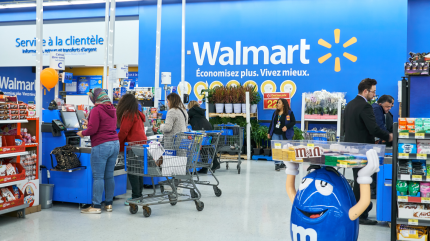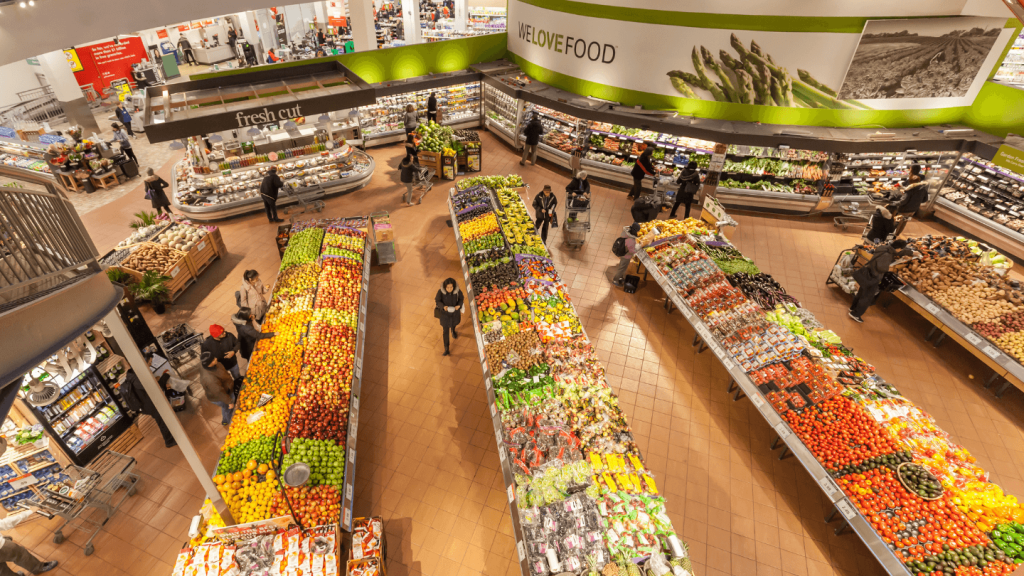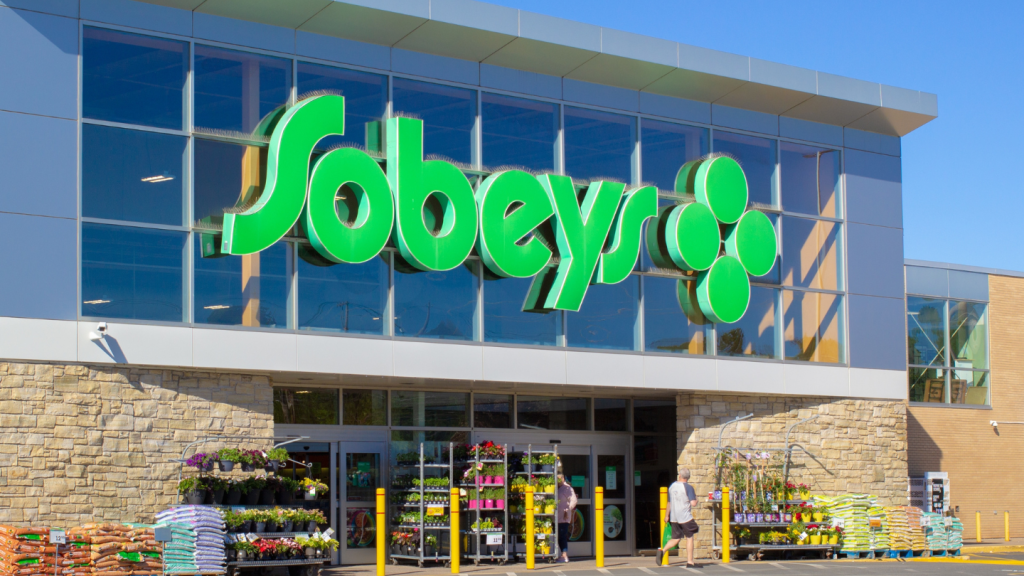
Earlier this month, Canada’s federal government revealed “all major retailers” had agreed to join the country’s incoming grocery code of conduct.
The code, which has been in development since at least 2022, looks to improve transparency and fair competition across the supply chain and operate as a space through which to resolve disputes.
Its evolution is being overseen by the Office of the Grocery Sector Code of Conduct (OGSCC), chaired by Michael Graydon, CEO of the Food, Health & Consumer Products of Canada (FHCP) trade body.
One major sticking point between the major retailers operating in Canada, including Walmart, Loblaw and Costco, and food suppliers has been fees that retailers have charged to keep suppliers’ products in stock and to promote them.
Sylvain Charlebois, a professor in food distribution and policy at the Faculties of Management and Agriculture at Dalhousie University in Halifax, tells Just Drinks: “The core principles of the proposed code continue to focus on providing food suppliers with a voice in resolving disputes with grocers.”
What has been agreed in Canada and why?
The code of conduct includes conditions for fair and ethical dealing, commercial agreements and a handful of miscellaneous topics such as how to handle the process of delisting a product.
One section lays out detailed rules about fees and under what circumstances retailers can charge them. The code also sets out a process for resolving disputes if parties can’t come to an agreement themselves.
Charlebois says: “The most straightforward and effective method to boost competition and stabilise prices is through the implementation of a mechanism that upholds supply chain democracy.
“Both domestic and international suppliers are hesitant to invest and expand operations due to market conditions dominated and restricted by major grocers. Currently, decisions are made unilaterally, with grocers often facing no repercussions.
“The proposed code aims to better protect food processors, who are vital for economic growth and innovation in the sector. This protection is expected to enhance competition at the retail level over time.”
In February 2023, grocery prices in Canada rose 10.6% year-over-year, more than double the then overall inflation rate of 5.2%. Meanwhile, corporate profits had risen, and major Canadian grocery chains were reporting very high profits.
Around the same time, there were calls from Canada’s Competition Bureau for increased competition in the country’s grocery market to help tame inflation.
The watchdog pointed out that in 2022 Canada’s three largest grocers – Loblaw, Sobeys, and Metro – collectively reported more than C$100bn (then $75.6bn) in sales and earned more than C$3.6bn.
They had been accused of keeping prices artificially high. Canada’s general inflation rate in May 2023 was 3.6% but grocery inflation was more than double that at 8.9%.
Nevertheless, there are still some question marks around the details of how the newly agreed code of practice will affect some of these retailers, Charlebois says.
“It’s unclear what specific proposals are being considered, as only the general outlines are available on the website.
“It seems likely that some adjustments have been made to accommodate major grocers like Loblaw, Walmart and Costco, though these changes have not been publicly disclosed.”

Graydon says that the agreement “helps support economic certainty for suppliers”.
He adds: “This is crucial as it allows them to invest more confidently in areas like product innovation, sustainability initiatives, and packaging improvements. These advancements not only benefit the suppliers but also enhance the overall consumer experience.”
Charelbois says independent retailers will “gain access to a broader range of choices, enhancing variety in the marketplace.
“Additionally, many regions, including remote markets, are likely to see an increase in retail outlets for food shoppers.”
What will the code mean for consumers?
The code was not written with the goal of lowering prices for consumers at the grocery store, which Charlebois notes is an “unrealistic expectation” anyway.
Mike Von Massow, a food economist at the University of Guelph, told Canadian broadcaster CBC the code could ultimately drive prices up if it means putting limits on the concessions that grocers can demand from their suppliers.
“It’s hard to see as an economist how taking money away from the big grocers will then also lead to lower prices,” he said.
Von Massow wrote on X, formerly known as Twitter, that he was “surprised it took this long for everyone to accept the grocery code of conduct.”
He added it was “inevitable” that it would be “a good thing but it won’t lower food prices” as it is not being enacted for another year and will affect the relationship between grocers and suppliers but not consumers.
However, Gary Sands, senior vice president of the Canadian Federation of Independent Grocers, told CBC the code of conduct will ultimately have a “positive impact” on prices.
“In other countries that have brought in grocery codes of conduct, prices have come down,” he said.
Similarly, the president of Kraft Heinz’ Canada division Simon Laroche said during an interview with The Canadian Press that “at the end of the day, the consumer is winning”.
He said the code of conduct could bring some stability to an industry emerging from a difficult four years marked by empty shelves, sticker shock and rising consumer frustration.
How have the retailers reacted?
Walmart made it clear with its statement after agreeing to the code of practice that previously, it had “not seen the need to have a code.”
The retailer added: “That said, we appreciate that key industry players have worked for many years towards a retailer-supplier grocery code of conduct. We joined the process last year to assess the proposed structure and provide our input and voice our concerns. More recently, we met with industry and retailer partners, reviewed the latest version, proposed comments, and sought clarification on some key provisions.

“It’s clear significant progress has been made towards a fairer and more balanced code. As a result, we’ve indicated our willingness to support the current version of the grocery code of conduct.
“We still have some important discussions with the industry steering committee regarding governance and dispute resolution. Overall, we will continue to do all we can to ensure that the code will not be an impediment to our purpose – to help Canadians to save money and live better.”
Loblaw announced its commitment to join the code in May. Sharing “support” for Canada’s grocery code of conduct at the time, the retailer said an essential aspect of discussions centred on creating a code that benefited “small suppliers, consumers and the industry, recognising the complexities of the Canadian grocery market”.
At the time, Charlebois wrote that Sobeys, Costco in Canada and Loblaw “have all emphasised that the grocery code of conduct can only be effective if all participants adhere to these new guidelines”.
So now it remains to be seen how a “unified approach”, as Grayson coined it, will affect the code’s performance.
How will the grocery code of conduct be enforced?
Currently, participation in the grocery code of conduct is voluntary.
This is partly due to the fact that Canadian grocers have to deal with a complex mix of federal, provincial and territorial laws. There was concern that legislating the code could result in each province having a slightly different version, and in some provinces having no code at all.
Sands told CBC there will be an adjudicator who can step in if parties can’t reach an agreement and that the code will be reviewed after about a year’s time to ensure it’s working.
Michelle Wasylyshen, a national spokesperson at the Retail Council of Canada, says the collaborative effort behind developing the code has “supported small stakeholders and the industry and also that it recognised the complexities of the Canadian grocery market”.
She adds: “There is more work to be accomplished to bring the code to life and our grocers are committed to be at the table to assist in the development of all necessary procedures and processes that are required to ensure the code is implemented efficiently and effectively.”
What happens next?
Canada’s grocery code of conduct is set to be implemented by June 2025, which includes hiring an adjudicator to handle disputes and setting up an oversight office, Grayson tells Just Drinks.
“The focus now is on educating everyone involved about the code’s requirements to ensure a smooth transition,” he says.
Charlebois claims the next step is “even more critical than achieving consensus: ensuring compliance”.
He adds: “It will be crucial to see if grocers strictly adhere to the code. There is a prevailing culture of food distribution in Canada where entities like Loblaw and Walmart dominate, often setting the stage for industry practices. The key challenge will be to effectively monitor and regulate these major players to ensure they remain in check.”
Charlebois claims public expectations will undoubtedly build pressure over time and that the industry must “demonstrate transparency” in how the code functions and its effectiveness.
“Additionally, there is a misconception that this is primarily about government intervention, which is not accurate. However, the government is involved and clearly communicating the nature of this involvement to the public will be crucial moving forward.”



